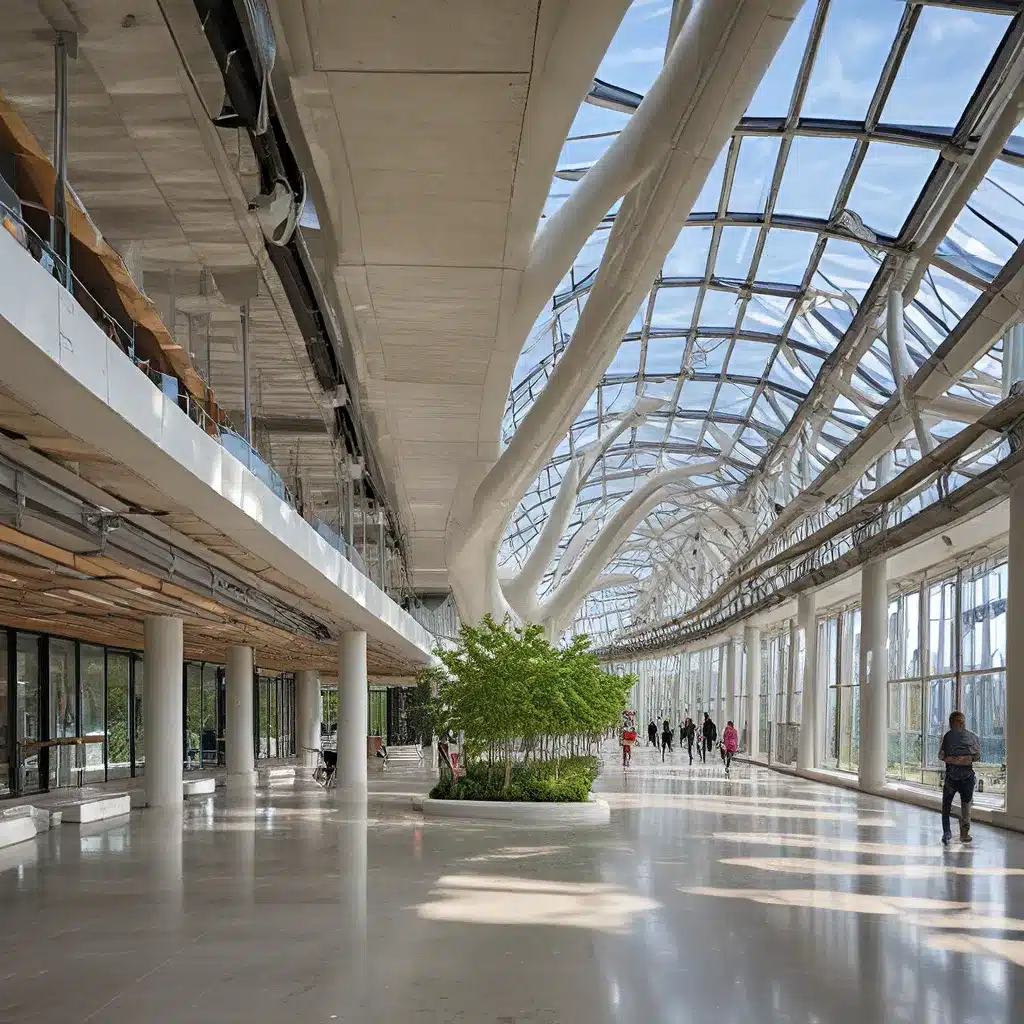
Unlocking the Potential of Green Buildings
As a passionate advocate for sustainable living, I’ve been fascinated by the growing green buildings movement and the ways it’s transforming the intersection of renewable energy and architecture. It’s an exciting time, with innovative technologies and design approaches paving the way for a more eco-friendly and energy-efficient future.
One of the key drivers behind this green building revolution is the urgent need to reduce greenhouse gas emissions and mitigate the devastating impacts of climate change. After all, the building sector accounts for a staggering 40% of our nation’s energy use and over 30% of global energy-related greenhouse gas emissions. Clearly, the potential for substantial improvement is enormous.
But it’s not just about the numbers – it’s about creating healthier, more livable spaces that improve human well-being. Green buildings incorporate measures that enhance indoor air quality, boost occupant productivity, and even increase biodiversity. It’s a holistic approach that considers the building’s entire lifecycle, from design and construction to operation and maintenance.
Renewable Energy: The Cornerstone of Green Building
At the heart of the green building revolution is the integration of renewable energy sources. Solar power, geothermal energy, and wind power are just a few of the clean energy solutions that are being seamlessly woven into architectural design.
One of the most popular and well-known approaches is the use of photovoltaic panels to generate on-site solar power. These sleek, efficient panels can be incorporated into a building’s rooftop or even integrated into the facade, providing a reliable source of renewable electricity. And it’s not just about the panels – passive solar design strategies, such as strategic window placement and shading, can also significantly reduce a building’s energy demands.
But the innovations don’t stop there. I’ve been fascinated by the emergence of living materials, like self-mending concrete that can actually repair its own cracks and strengthen itself over time. These bio-based solutions not only reduce the environmental impact of traditional building materials but also introduce a level of resilience and adaptability that traditional structures can’t match.
Overcoming the Challenges of Green Building
Of course, the path to a more sustainable built environment isn’t without its challenges. One of the most significant hurdles is the higher initial cost of green building technologies and materials. Developers and homeowners often face the dilemma of weighing the long-term benefits against the upfront investment.
However, as the green building industry continues to mature and scale, I’m optimistic that these cost barriers will become less daunting. Increased government support, through policies, incentives, and research and development initiatives, is helping to drive down prices and make green building more accessible.
Another challenge lies in the intermittent nature of some renewable energy sources, like wind and solar. Relying on these variable resources can introduce fluctuations in energy supply, which can be tricky to manage. But innovative solutions, such as advanced building controls and energy storage systems, are being developed to address this issue.
The Role of Building Codes and Standards
One of the driving forces behind the green building movement has been the development of comprehensive rating systems and building codes that define and codify sustainable practices. Programs like the U.S. Green Building Council’s LEED (Leadership in Energy and Environmental Design) certification have become widely recognized benchmarks for green building excellence.
But the work doesn’t stop there. Researchers and policymakers are constantly refining these standards, incorporating the latest technologies and best practices to push the boundaries of what’s possible. At the forefront of this effort is the Pacific Northwest National Laboratory (PNNL), which has been instrumental in advancing building energy codes, developing cutting-edge energy-efficient technologies, and supporting the broader green building ecosystem.
The Future of Green Buildings: A Sustainable Tomorrow
As I look to the future, I can’t help but feel a sense of excitement and optimism about the trajectory of green buildings. The continued innovation in renewable energy, materials, and building controls is only the beginning. I’m eager to see how the integration of smart home technologies, artificial intelligence, and Internet of Things (IoT) devices can further enhance the performance and livability of green buildings.
And it’s not just about the technical advancements – I’m also inspired by the growing public awareness and demand for environmentally friendly, energy-efficient homes and workspaces. Consumers are increasingly prioritizing sustainability, and the market is responding in kind.
Of course, there’s still work to be done. Navigating the complexities of zoning, local regulations, and neighborhood integration can be a challenge for some green building projects. And the ongoing debate around the cost-effectiveness of certain green technologies will undoubtedly continue.
But as I engage with experts, attend industry events, and delve into the latest research, I’m convinced that the green building movement is poised for exponential growth. The potential to drastically reduce our environmental impact, improve human health and well-being, and create a more sustainable future is simply too compelling to ignore.
So, whether you’re a developer, architect, or simply a curious homeowner, I encourage you to explore the world of renewable energy and green building design. The journey towards a more sustainable tomorrow starts with each of us, and the solutions are within our grasp. Who knows, you might just find the inspiration to transform your own living or working space into a shining example of eco-friendly, energy-efficient design. The future is green, and it’s time to Firewinder your way towards a cleaner, more sustainable built environment.

